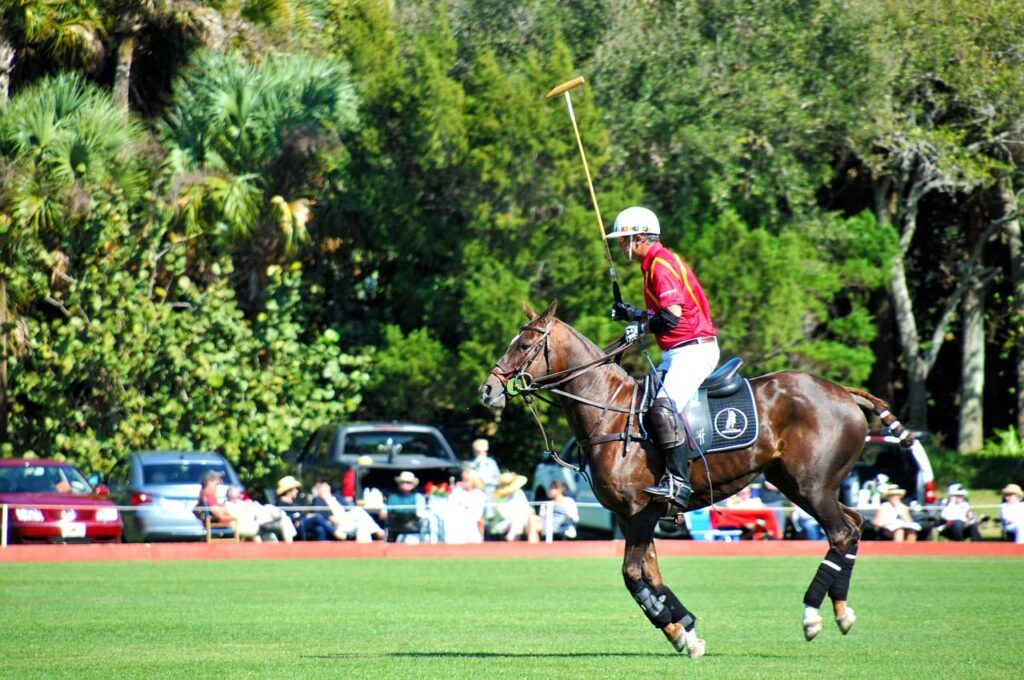Polo is a fast-paced equestrian sport that combines elements of speed, strategy and skill. The game takes place on a large field, where teams of four riders compete to score goals against their opponents. The main objective of each team is to score more goals using wooden sticks to hit the ball.
The Main Objective and Rules of the Game
The objective of the game of polo is simple – to score more goals than the opposing team. The game is played on a large field measuring up to 300 yards long and 160 yards wide. Each team consists of four players, each on horseback and armed with a wooden stick. Players may only use their right hand to control the club.
The Field and Its Dimensions
| Characterisation | Size |
| Field length | 300 yards |
| Field width | 160 yards |
| Goal width | 8 yards |
Players aim to hit the ball with their stick and drive it into the opponent’s goal. The height of the goal is not limited, which adds to the momentum of the game. The ball can be passed between team players.
Highlights of the Game
Ball Line: One of the key rules is not to cross the line of movement of the ball in front of the player who hit it. This rule gives the hitting player an advantage in movement. Players should approach the opponent from behind or to the side of the ball line.
Ways Of Defending The Ball
There are several ways of defending and tackling the ball:
- Ride off: A player may ride side by side with the opponents in possession and try to push them off the line.
- Kick the ball: A player may kick the ball before the opponent in possession does, thereby gaining an advantage.
- Hooking: A defender may block an opponent’s stick shot with his own stick.
Chukka
The game is divided into periods, called chukkas, lasting 7 minutes each. The game continues for another 30 seconds after the completion of a chukka, or until the game is stopped. Depending on the tournament, the number of chukkas in a game can vary from 4 to 8.
Player Roles
Each player on the pitch has a unique role:
- Number 1: the main striker, his job is to score goals.
- Number 2: also a striker, often supporting number 1.
- Number 3: tactical leader, responsible for long passes.
- Number 4: the main defender, tries to stop the opponent’s number 1.

Offences and Penalties
Penalty kick:
If a team infringes the Laws of the Game, a penalty kick may be awarded to the opponent. This kick is taken from various distances – 30, 40 or 60 yards from the goal. The possibility of a defence depends on the seriousness of the infringement and the type of penalty, which adds strategic depth to the situation on the pitch.
Penalty Goal:
For particularly serious infringements of the Laws of the Game, the referee may award a penalty goal in favour of the attacking team. In such cases, play is restarted from the spot of the foul and the teams do not change ends of the field.
Additional Aspects of the Game
Throw-in procedure:
When the ball flies out of the field of play, the referee restarts play by putting the ball back into play by serving from the touchline. This method quickly restores active play and maintains the continuity of the match.
Trampling of Divots:
At half time of the game, spectators are invited onto the pitch to participate in ‘divot tramping’, a process whereby damage to the turf caused by horses’ hooves is repaired. This not only helps to keep the pitch in good condition, but also serves as a great opportunity for socialising amongst the spectators.
Conclusion
The game of polo requires not only physical effort and the ability to control a horse, but also tactical understanding and teamwork. Every polo match provides spectators with an exciting spectacle and an opportunity to appreciate the skills of the riders and their horses in action, making each game a unique and unforgettable experience.
FAQs
What are the dimensions of a polo ball?
A polo ball is usually about 3-3.5 inches in diameter and is made of plastic or wood.
What are the equipment requirements for players?
Players must wear helmets, boots, white trousers and goggles for safety.
How long does it take to learn polo?
Training can take anywhere from a few months to a year, depending on previous riding experience.
Can women play polo?
Yes, polo has no gender restrictions and many women successfully participate in the sport.